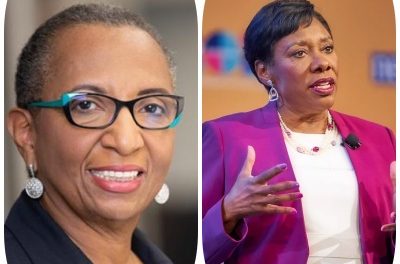By Fred Redmond
This month marks 55 years since the Memphis sanitation strike began following the deaths of two sanitation workers, Echol Cole and Robert Walker, who were crushed by a faulty garbage truck. Organizers and activists rallied the community so that Black sanitation workers who had long experienced low wages and an unsafe work environment would finally gain respect on the job.
The strike was a watershed moment in the struggle for economic and racial justice. Dr. Martin Luther King Jr. visited Memphis to support the workers and was assassinated 12 days before they won their union with the American Federation of State, County, and Municipal Employees (AFSCME).
The strike is an enduring reminder of the crucial role that unions play in rectifying the impact of discrimination and racism against Black people. Many of the same issues that the sanitation workers faced five decades ago persist, and in some cases, worsened, and the need for unions has never been more urgent.
All eyes are again on Memphis after Tyre Nichols died following a violent encounter with police officers during a traffic stop. The officers were quickly fired and charged for their actions, and the labor movement joined the call demanding justice. But the incident reignited conversations on the layers of challenges that Black people continue to face in Memphis.
Taking a wider view, Memphis is a majority-Black community that has some of the highest rates of poverty in the country for a major city. Black residents are three times more likely to be impoverished than white residents, and Memphis has the highest rate of children living in poverty in the nation. Unfortunately, Memphis’ story can be found in communities across America.
A 2022 analysis found that the average per capita wealth for white Americans was nearly $340,000 compared to just over $60,000 for Black Americans. Black people are also far less likely to own homes than their white counterparts, and a recent report showed that chances for upward mobility have declined. Black families and communities have been disproportionately impacted by the pandemic, experiencing higher rates of sickness and financial insecurity.
But there is a solution, and it runs right through the labor movement. Unions guarantee a living wage, job security, and good benefits like health care and retirement. They have long been a pathway for Black workers to ascend into the middle class.
A. Philip Randolph, my personal hero, understood the value of unions and was a key architect in bringing the labor and civil rights movements together. He worked alongside Dr. King and labor activist Bayard Rustin, and together with other civil rights leaders, they championed the interests of the Black working-class. They argued that racial inequality should be at the forefront of the national labor agenda. Although they faced resistance from leaders inside the labor movement, they were eventually successful in demonstrating why these two fights were so deeply intertwined.
I am a product and beneficiary of that alliance. When opportunities began to open up in industrial communities in the North, my parents joined millions of Black Southerners who made the journey North in search of a better life.
We landed in Chicago, where my father eventually got a union job at a Reynolds aluminum factory. Our family escaped poverty, and we were financially secure for the first time. As the highest-ranking African American to ever serve in the labor movement, I want to ensure that everyone is afforded those same life-changing opportunities.
Today, a collective bargaining agreement still has an outsized impact on the well-being of Black families. Black union workers are paid 13 percent higher than workers who aren’t covered by a contract, and the gender pay gap shrinks significantly for Black women in unions.
Our movement is working to ensure that recent investments by the Biden administration in infrastructure and technology create opportunities for Black workers to enter high-skilled apprenticeships that are pathways into the middle class.
A study by North America’s Building Trade Unions (NABTU) showed that union programs are more effective at diversifying the pipeline to jobs in the construction industry. That is bolstered by the fact that in 2022, more than 80 percent of the people enrolled in NABTU’s apprenticeship readiness programs were people of color.
We also recently partnered with the Chris Gardner Foundation’s Permission to Dream program to raise the awareness of high school students in underserved communities about the quality, life-changing careers in the building trades, and aid their entry into apprenticeships. Through the partnership, we are ushering in a new generation of union members and leaders.
Fifty-five years later, as we honor the legacy of the Memphis sanitation workers, it’s clear that we still have work to do. But through the power of unions, we can unleash a new era of economic prosperity for Black workers.
Fred Redmond is the secretary-treasurer of the AFL-CIO, America’s labor federation with
59 unions and 12.5 million members.
This article was originally published by WordinBlack.com.
The post Unions are relevant now more than ever appeared first on AFRO American Newspapers .











